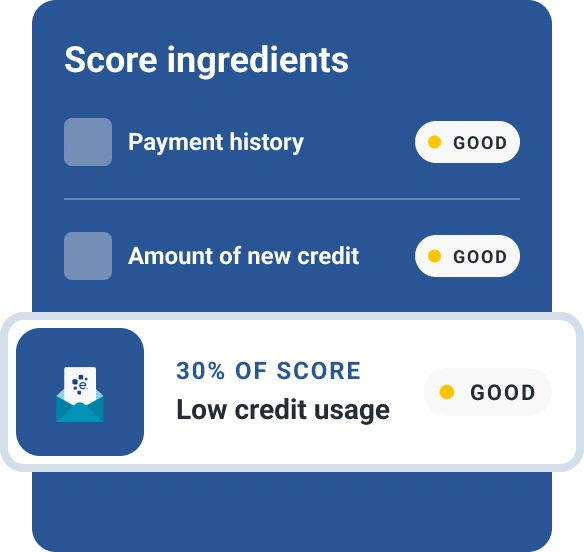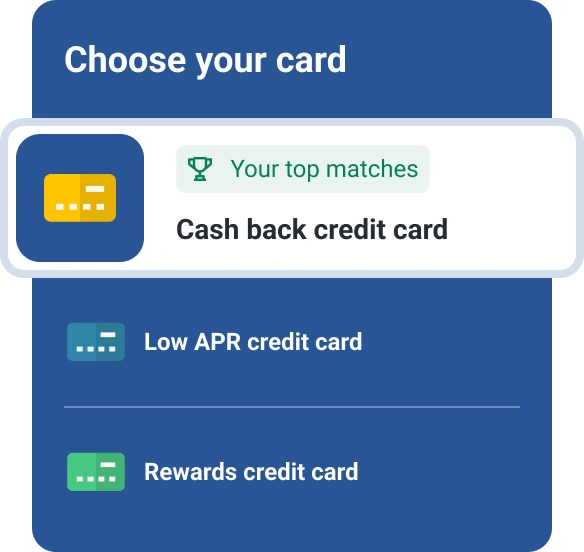Can I Pay My Credit Card Bill With Cash?
Quick Answer
You can pay your credit card in cash by visiting the card issuer’s branch to pay in person, find an ATM belonging to the issuer to deposit your payment or purchase a money order with cash to mail to your card issuer.

You can pay your credit card in cash when necessary. For some individuals and situations, there may be advantages or disadvantages to paying in cash. Here's how to pay in cash and if it's the right move for you.
How to Pay Your Credit Card in Cash
If you want to pay your credit card bill in cash this month, here are some simple ways to do so:
- At a branch: Visit the card issuer's branch to pay at the counter in person. Let the teller know you want to pay your credit card bill and provide your cash payment.
- Via an ATM: Go to your card issuer's ATM:
- To pay your credit card in cash at the ATM, insert your credit card as you would your debit card when making a withdrawal.
- On the screen, select the payment and follow the instructions to insert your cash payment. Take precautions to make sure the ATM counts your cash payment correctly.
- Money order: Purchase a money order with cash to mail to your credit card issuer.
Don't mail cash directly to your credit card provider, as any losses may not be recuperated.
Should You Pay Your Credit Card in Cash?
You can pay your credit card in cash if it is the option that makes the most sense for you. Some situations may make a cash payment the best option, such as if:
- You are unbanked. If you do not have a bank account from which you can sign up for autopay or online payments for your credit card, paying in cash may be your best option. Paying in cash at a bank or ATM can help you maintain on-time payments for your credit card even if you don't have access to a bank account.
- You're experiencing a connection outage. Experiencing connection issues like a power outage or phone issues on the day when a bill is due can be nerve-wracking. But if you can travel to a branch or ATM to pay your card in cash, you can still get your credit card paid on time.
- You are paid in cash. For workers such as servers who get many cash tips, being able to pay some of your bills directly out of your earnings may be convenient. This permits you to skip the middleman and wait time of making a bank deposit.
- You are a cash envelope-based budgeter. For those who use cash primarily to budget, you may find it easiest to collect what you owe on your credit card in dollars and cents over the month. Then you can pay off the balance in cash. Doing so might save you time on deposits and digital transfers.
If paying your credit card in cash makes sense for you, consider also paying off the full balance when you go to make your cash payments. Doing so can help improve your credit score and keep more of that cash in your pocket in the long run.
Benefits of Paying Off Your Credit Card Balance in Full
There are many benefits to paying your balance in full each month. Whether you do so with cash or online using your checking account, these benefits may include:
- No interest: The most essential reason to pay your credit card balance in full each month is to avoid interest. When you pay your statement balance in full each month, you do not accrue interest, meaning you only owe the money you spent.
- Lower credit utilization rate: Your credit utilization rate is the ratio of how much available credit you've used versus how much you have access to. The lower your credit utilization rate, the better for your score. To keep from harming your score, your ratio should be below 30%, and for the best scores, ideally below 10%.
- Increased credit score: By making payments on time and keeping your credit utilization rate low, you may see an increase in your credit score. Responsible credit card use is one of the best ways to help build your credit. This is why options like secured cards are popular for credit-building.
Want to make sure you stay on top of your balance in full each month? Try these simple habits:
- Schedule autopay digitally. Though it's possible to pay in cash, digital automatic payments can help make sure you are never late on a credit card payment.
- Stick to your budget. By sticking to your budget and not overspending, you can be more confident in your ability to pay off your monthly credit card balance in full.
- Schedule reminders in your personal calendar. If you plan to pay your credit card manually—whether in cash or online—setting reminders in a calendar or app can help you pay on time. Setting these at least a few days ahead of your due date can help account for any money transfer delays and get your payment in on time.
Making your payments part of a financial routine can help you pay the balance in full and benefit the most from the convenience of a credit card.
Cash In on Your Credit
If the option to pay your credit card bill in cash is important to you, you can look for cards that have physical branches or ATMs nearby. This will make it easier to deposit your cash payment.
When you're shopping for a new credit card, Experian's card comparison tool can help you find a good fit. Get preapproved matches that give you the best odds of approval when you get started browsing for free.
Don’t apply blindly
Apply for credit cards confidently with personalized offers based on your credit profile. Get started with your FICO® Score for free.
See your offersAbout the author
Emily Cahill is a finance and lifestyle writer who is passionate about empowering people to make smart choices in their financial and personal lives. Her work has appeared on Entrepreneur, Good Morning America and The Block Island Times.
Read more from Emily

